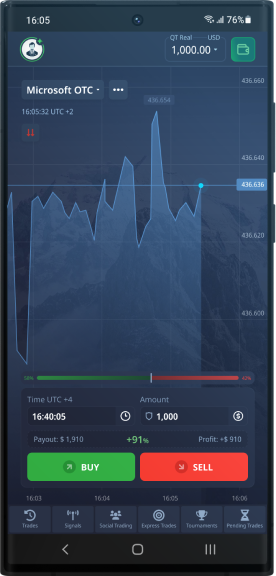
Understanding the Pocket Option Envelope Trading Strategy
The world of online trading has seen immense growth in recent years, with various strategies emerging to help traders maximize their profits. One such strategy is the Pocket Option Envelope Envelope Pocket Option, which offers intriguing insights into market movements. This article will delve deep into the Pocket Option Envelope, exploring its mechanics, advantages, and practical application. We will also examine how traders can incorporate this strategy into their daily routines to enhance their trading efficiency.
What is the Pocket Option Envelope?
The Pocket Option Envelope is a technical analysis tool used to gauge market trends and potential price reversals. It consists of two lines—an upper and a lower envelope—constructed based on a certain percentage deviation from a specified moving average. These envelopes can assist traders in identifying overbought and oversold conditions, determining potential entry and exit points effectively.
How the Envelope Works
The Envelope is typically generated using a simple moving average (SMA). The following steps outline how to create the Envelope:
- Select a time frame for your trading strategy.
- Calculate the moving average for that time frame.
- Decide on the percentage deviation for the upper and lower envelopes, commonly set at 1% to 2% above and below the moving average.
- Plot the upper and lower lines on your trading chart.
Advantages of Using the Pocket Option Envelope
Employing the Pocket Option Envelope strategy presents several advantages:
- Visual Clarity: The envelopes provide a clear visual representation of market conditions, making it easier for traders to identify potential trading opportunities.
- Trend Confirmation: The strategy helps confirm trends. When prices consistently touch the upper envelope, it may confirm a bullish trend, while prices hitting the lower envelope can signal a bearish trend.
- Entry and Exit Signals: The Envelope can help traders pinpoint optimal entry and exit points by signaling when the price breaks through the envelopes.
- Adaptability: The strategy can be tailored to fit various trading styles, from scalping to longer-term trading.
Implementing the Pocket Option Envelope in Your Trading Routine
To effectively utilize the Pocket Option Envelope strategy, follow these steps:

Step 1: Setting Up Your Chart
Begin by selecting a charting platform that supports Envelope indicators. Most popular trading platforms, including Pocket Option, provide this functionality. Set your desired time frame and apply the Envelope indicator based on your preferred moving average settings.
Step 2: Identify Trading Opportunities
Monitor how prices interact with the upper and lower envelopes. Look for price reversals, breakouts, or consolidations at these levels. These interactions can offer lucrative trading opportunities.
Step 3: Use Additional Indicators
While the Envelope can be a standalone tool, using it alongside additional indicators such as RSI (Relative Strength Index) or MACD (Moving Average Convergence Divergence) can enhance decision-making and provide more reliable signals.
Step 4: Risk Management
Set stop-loss and take-profit levels based on your risk tolerance. Ensure that you’re practicing sound risk management techniques, as trading inherently involves risks.
Common Mistakes to Avoid
While the Envelope strategy can be potent, traders should remain aware of common pitfalls:
- Neglecting Market News: External factors can heavily influence market trends. Keep abreast of economic news and events that may affect asset prices.
- Overtrading: Avoid entering trades impulsively. Take the time to analyze patterns and movements.
- Ignoring Time Frames: Different time frames can yield varying results. Ensure you understand the dynamics of the time frame you’re trading on.
Conclusion
The Pocket Option Envelope is a valuable addition to any trader’s toolkit. By understanding its mechanics and implementing it effectively, traders can enhance their market insights and make informed trading decisions. Remember to combine this strategy with good risk management and be aware of prevailing market conditions. As with all trading strategies, continuous practice and adaptation are key to achieving long-term success in the financial markets.

